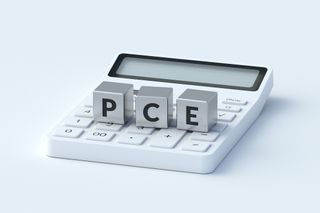The Personal Consumption Expenditures Price Index (PCE), the Federal Reserve’s preferred inflation metric over the past 25 years, came in hotter than expected recently and Wall Street wasn’t pleased.
According to the Bureau of Economic Analysis, February’s PCE inflation figure was up 2.8% year over year in February, higher than the median 2.7% increase expected by economists. While that difference wasn’t huge, it added to the generally sour mood of the market in March and contributed to a widespread stock market sell-off.
So, what exactly is PCE inflation and how does it differ from the more commonly quoted Consumer Price Index (CPI) that’s reported by the Bureau of Labor Statistics?
Subscribe to Kiplinger’s Personal Finance
Be a smarter, better informed investor.
Save up to 74%
Sign up for Kiplinger’s Free E-Newsletters
Profit and prosper with the best of expert advice on investing, taxes, retirement, personal finance and more – straight to your e-mail.
Profit and prosper with the best of expert advice – straight to your e-mail.
And more importantly, why does the Fed prefer the PCE over other inflation metrics such as CPI?
In 2000, former Federal Reserve Chair Alan Greenspan made the PCE the Fed’s preferred inflation gauge, and every Fed chair since has confirmed it as the bank’s primary measuring stick.
To understand why, let’s dig into the details.
Why does the Fed use PCE instead of CPI?
(Image credit: Getty Images)
CPI and PCE inflation tend to be pretty similar. However, there are a few noteworthy differences in what is included in the indexes, how things are weighted and how each index adjusts for real-world changes.
The Consumer Price Index measures out-of-pocket expenses for urban consumers on a fixed basket of goods and services. These include basics like food, rent and gas.
The Personal Consumption Expenditures Price Index casts the net a little wider to include spending on behalf of American households by others. This means things such as employer-paid health insurance or Medicare and Medicaid benefits. As such, you could argue that the PCE gives a generally more complete picture of inflation.
This is one reason the Federal Reserve prefers PCE over CPI. It includes a wider assortment of items covering a larger percentage of the U.S. population.
While CPI and PCE are generally going to trend in the same direction, there can be some significant differences due to the weightings of the items.
For example, housing accounts for a massive 33% of the CPI but only 15% of the PCE. Part of this is because the CPI focuses on urban consumers, whereas the PCE includes rural populations where housing tends to be cheaper.
This doesn’t mean one is “right” or the other is “wrong.” But to understand and interpret either, you need to know what is included in the numbers. And the Fed has taken the view that the PCE’s weightings are more reflective of the day-to-day reality of the typical American.
Most important of all perhaps is that there is a major difference in the way the two inflation metrics are calculated. CPI uses a fixed basket of goods and services, which assumes that people buy the same things every month. It makes no allowance for behavior changes due to rising prices.
The PCE, meanwhile, uses a chained index. This accounts for how Americans substitute goods when prices change. For example, if chicken gets unusually expensive due to a bird flu outbreak, beef or pork might be comparatively cheaper.
This might encourage folks to shy away from chicken and opt for a lower-priced alternative instead.
Because the PCE reflects (or at least attempts to reflect!) real-world spending changes, it tends to report lower and smoother inflation.
Does this mean the Fed is “cheating” by cherry-picking an inflation metric that is often lower?
Not at all.
The Fed wants to avoid getting distracted by the noise and focus on real trends.
Returning to the chicken example, the soaring price of chicken and eggs in the United States isn’t due to inflation, per se. It’s due to a nasty avian pandemic that is reducing the chicken population. It’s a supply shock, not a demand-based surge brought on by excessively loose monetary policy.
But if food prices are rising in general, that’s a different story. That would be a sign of real, systemic inflation. The PCE inflation gauge does a better job of communicating this real, systemic inflation to the Fed’s policymakers.
The bottom line on PCE

(Image credit: Getty Images)
Is the Fed “right” to use PCE inflation?
That’s open to debate. But of the major inflation indexes tracked today, the PCE’s broad product and geographic focus and its attempts to model real-world spending changes make it a worthy choice for the Fed.

